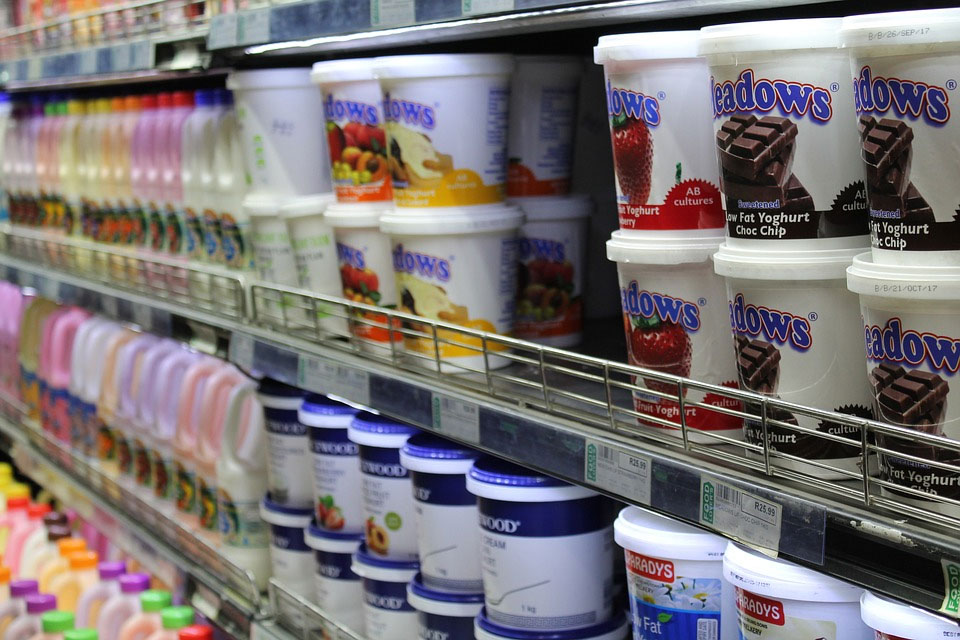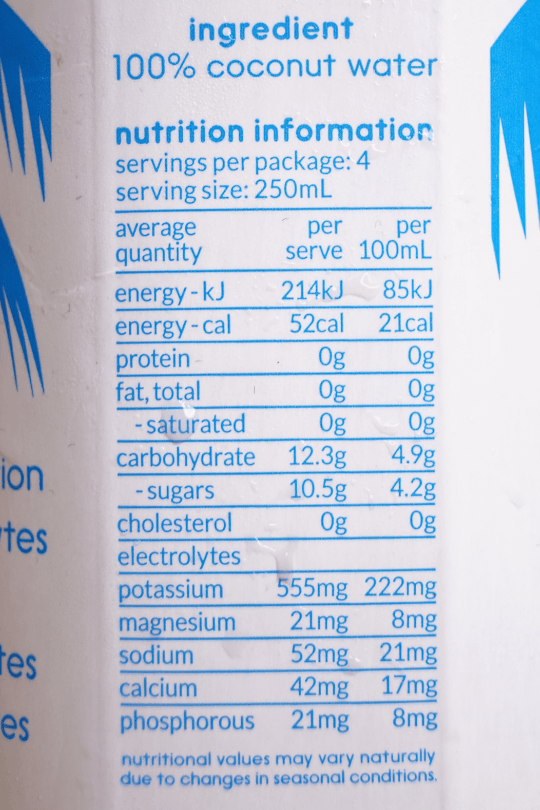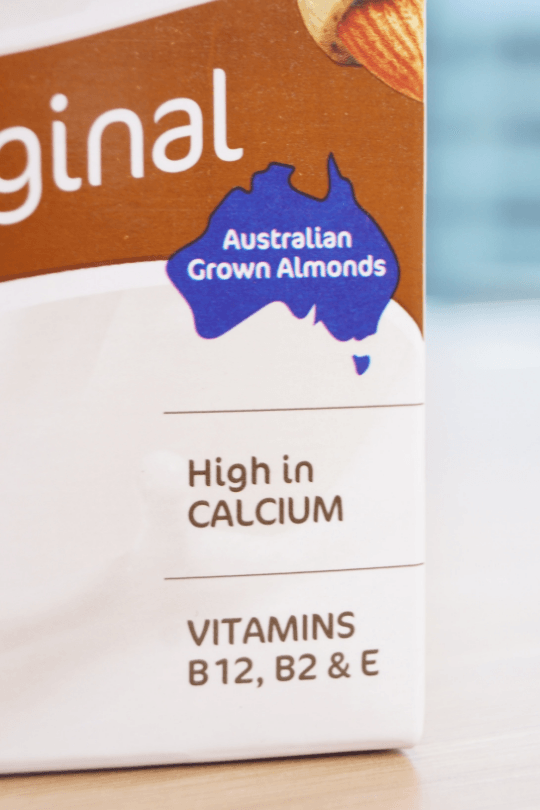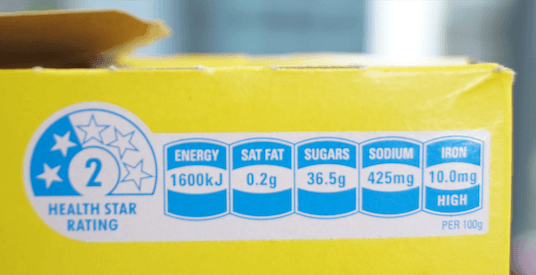Nutritional labels can be quite a confusing thing. Stop and think, do you actually know what it’s telling you? If not, you’re not alone. 59% of consumers from around the world have difficulty in understanding nutrition labels and 7% don’t know how to read them at all!
Can you trust food labels to help you make healthy choices, or are you simply getting a healthy dose of advertising? In this post we break down the nutritional information panel, discuss why it’s important to understand how to read them and what each part of the panel is actually telling you.

Why It’s Important To Read Nutrition Labels


Consumers are often faced with confusing and misleading claims on food labels including where our food comes from and what kind of nutritional value it brings to our bodies.
This leads to an unhealthy habit of purchasing items of food based on their package claims, not nutritional fact.
Terms such as ‘natural’, ‘whole grain’, ‘low fat’, ‘low carb’, ‘organic’ or ‘fresh’ may not be all they claim to be. These are just a few common marketing claims that are used on food packaging to convince consumers to buy their products. Misleading? Absolutely.
Section 2. Understanding the Components
Nutrition information panel


The nutrition information panel is where you find information about the nutritional value of that product. It provides the average amount of:
- Energy ( in kilojoules, or calories, or both)
- Protein
- Fat
- Saturated Fat
- Carbohydrate
- Sugars
- Sodium
Any labels present on the packaging that make a claim like ‘good source of fibre’ must substantiate this claim in the nutrition panel.
These nutritional values are displayed most commonly in two ways – ‘serving size’ and ‘quantity per 100g’.
Serving Size
Serving size is a tested portion of that product that the manufacturer uses to deliver nutritional information. A common mistake people is make is reading the serving size values thinking it applies to the entire packet.
Unsurprisingly, manufacturers want to display their products in the healthiest light, so confectionary, for example, will often display a low serving size to make it appear that what they’re offering isn’t too bad for you.
Tim Tams, for example, have 13 biscuits per packet. The serving size values are for just 1 biscuit only. WHO HAS ONLY ONE TIM TAM? Nobody, that’s who.
Quantity per 100g
Quantity per 100g is an industry standard and displays the nutritional values present in 100g of that product. It’s important to note however that the packet may not contain 100g/100ml of food or drink. A small potato chip packet, for example, only contains 45g.
Which one should you use?
If you’re choosing to eat a packet of something, then look to the serving size and then add the values to meet the total weight of the product. If you’re using that product for cooking then the 100g values may be a better starting point.
Don’t forget that these values are an average and that your ideal daily intake of these nutrients will vary depending on what you want to achieve. It’s vital that you consult a dietician, or similar health professional, who is able to determine your optimal dietary requirements.
What foods don’t require the panel
There are a few examples of foods that don’t require the nutrition panel.
- A herb or spice
- Mineral water
- Tea or coffee (tea bags, loose leaf tea, and granulated coffee or coffee beans)
- Foods that are unpackaged
- Food made and packaged at point of sales such as bread at your local bakery.
Food with small packages such as a surface area of less than 100cm square are not required to have one either.
Ingredients List
The ingredients list can be found underneath the nutrition information panel or as it’s own section on the packaging. Ingredients used in that particular food must be listed in descending order by weight. Anyone looking to avoid certain ingredients from their own diet or for religious purposes should look here first.
Component ingredients
A component ingredient is made up of two or more ingredients. An example would be tomato sauce used in a frozen pizza. Tomato sauce would consist of tomatoes, capsicum, onions, water and herbs. This would still be declared in the ingredients list.
If the component ingredient is used in an amount less than 5% then it does not need to be included.
Nutrition claims and health claims


Both nutrition claims and health claims are voluntary statements made by food businesses and advertisers about food.
There are rules that are set in place for food businesses that they must abide by, if they choose to make a nutrition content claim or health claim on their products.
It’s important to understand the difference and that some nutrition claims are just used to entice the consumer rather than to make a factually correct health statement.
Nutrition content claims
All food businesses in Australia and New Zealand are to comply with Standard 1.2.7( which is part of the Food Standards Code) when making nutrition content claims or health claims on food label in advertisements and endorsements.
The Standard 1.2.7 applies to food labels and advertising components which are sold and/or prepared in Australia or New Zealand. Imported products also need to follow the standards.
An example of these claims that you may have come across on food packages are ‘ good source of fibre’ or ‘ good source of iron’.
False claims
Food businesses are not to make any false or misleading claims. It’s an offence to engage in any conduct that can be deceptive to consumers.
The Fair Trading laws and food laws in Australia and New Zealand enforce these laws to protect consumers from making unhealthy choices and buying products that are not true to their claims.
Health Claims
Health claims refer to the relationship between a food and health. It’s a claim about something in the food that can affect your health.
There are two types of health claims:
- General level health claims – claims that something in the food can affect your health. An example would be ‘fibre help keeps you regular’. A food business can use a general health claim that isn’t listed in the Standard as long as they support their claim with scientific evidence.
- High level health claims – claims about something in the food and how it can have a serious affect on a disease or indicator of a serious diseases. For example ‘ This food is low in sodium, a diet low in sodium may help reduce blood pressure’. Similar to general level health claims, all health claims must be supported by scientific evidence.
Daily Intake Guide
The daily intake guide provides information on the total amount of energy, fat, protein, carbohydrates, sugars, dietary fibre and sugars to be consumed by an ‘average’ adult, and based on an 8700 kilojoule (2079 cal) daily intake. This is in accordance with the national dietary guidelines.
The percentage daily intake information expresses the particular nutrients and energy that will be obtained by consuming one serving of the food. They are based on a single set of average values for adults. Note that these figures may not be applicable to yourself, since everyone will have their own specific goals or health needs.
The daily intake guide is used to help you balance your daily intake and also providing information to help you make decisions for your own balanced diet.
How to calculate the percentage daily intake values
The Food Standards of Australia and New Zealand site have a guide on how to calculate the percentage daily intake values which can be viewed below.
What information is to be provided
The percentage daily intake values (%DI) must include the %DI of energy, fat, protein, carbohydrate, sugars, saturated fatty acids and sodium that is provided by the food.
On the nutritional information panels you will see these following statements that must be provided :
- “Based on an average adult diet of 8700kJ”
- “Percentage daily intakes are based on an average adult diet of 8700kJ”
Percentage RDI (Recommended Dietary Intake)
The Percentage RDI information expresses the percentage of the recommended dietary intake of certain vitamins and minerals from consuming the one serving of the food product.
This must be provided if a claim requiring nutrition information is made about or based on a vitamin or mineral that is in the Food Standard Code .
Below is how the percentage daily intake is presented on the nutrition information panel.
Glycaemic index
The glycaemic index was initially created for people with diabetes and is used to organise foods and drinks according to how quickly they affect glucose levels in the blood.
Carbohydrate-containing foods are rated on a scale from 0 to 100 that ranks these foods based on their effect on blood sugar level over a period of time – usually over 2 hours.
The GI symbol only appears on food products that meet certain nutrient criteria for that food category. High GI foods such as soft drinks, cordials, syrups and sugars are excluded. Low GI foods with a GI of less than 55 will have a symbol to indicate this on their packaging.
How to interpret the GI rating system for you
You should only use the rating system as a guide when selecting foods or drinks as it’s not an indication of healthiness. Some foods such as fruits, vegetables and cereals may have a higher GI than other “occasional” foods like biscuits and cakes.
Along with helping control or prevent diabetes, low GI foods can help you feel fuller for longer, give you sustained energy, which together can help encourage weight loss.
The best thing to do is to consult a health professional who can provide a more clearer list of what you should be eating to maintain and reach your own health goals.
Health Star Rating


The Health Star Rating is a labelling system that rates the overall nutritional profile of packaged food. It’s a rating system from ½ a star to 5 stars.
The number of stars is assessed using the positive and risk nutrients in food. It’s backed by an algorithm that was developed in conjunction with Food Standards Australia and New Zealand and nutritional experts.
It’s purpose is to provide a quick and easy way to compare similar packaged foods. The more stars, the healthier the choice.
Food manufacturers and retailers have a responsibility to correctly and accurately use the Health Star Rating System. Their responsible for:
- calculating the Health Star Rating
- displaying Nutrient Information
- consistency of information between the Health Star Rating and the Nutrition Information panel
- complying with the relevant legislation and regulations
Why the Health Star Rating has been put into place
The government has placed this initiative in food packaging to try and combat obesity. In Australia we have the highest rate of obesity in the world with 63% of adults and 1 in 4 children being overweight.
Most of our food products have the nutrition information panel to provide us with important nutritional information, but the health star rating is to assist consumers make healthier choices.
Make healthy choices that are fit for you


Now that we can interpret the different components of the nutritional information panel, it’s important that we make our own healthy choices. Whether that be for diet or fitness purposes, your body’s needs are different to someone else’s and it’s critical you’re making the right decisions for you.
It’s not an easy task to do alone, so consider consulting a health professional, like dietician, to see what’s best for your body and your nutrition goals.
Find out how you can make healthy choices for you!
At Crunch Fitness we aim to help and support our gym-goers with the best possible advice that is suitable to them and only them. Reach your own health and fitness goals, and get in touch with one of the Crunch team members!



Crunch Fitness Virtual Assistant
 I'd like some help reaching my Fitness goals!
I'd like some help reaching my Fitness goals! I'm an existing member and would like some help!
I'm an existing member and would like some help! I have some questions about becoming a Crunch member!
I have some questions about becoming a Crunch member! AU
AU United States
United States Canada
Canada Costa Rica
Costa Rica Spain
Spain Portugal
Portugal NSW Clubs
NSW Clubs